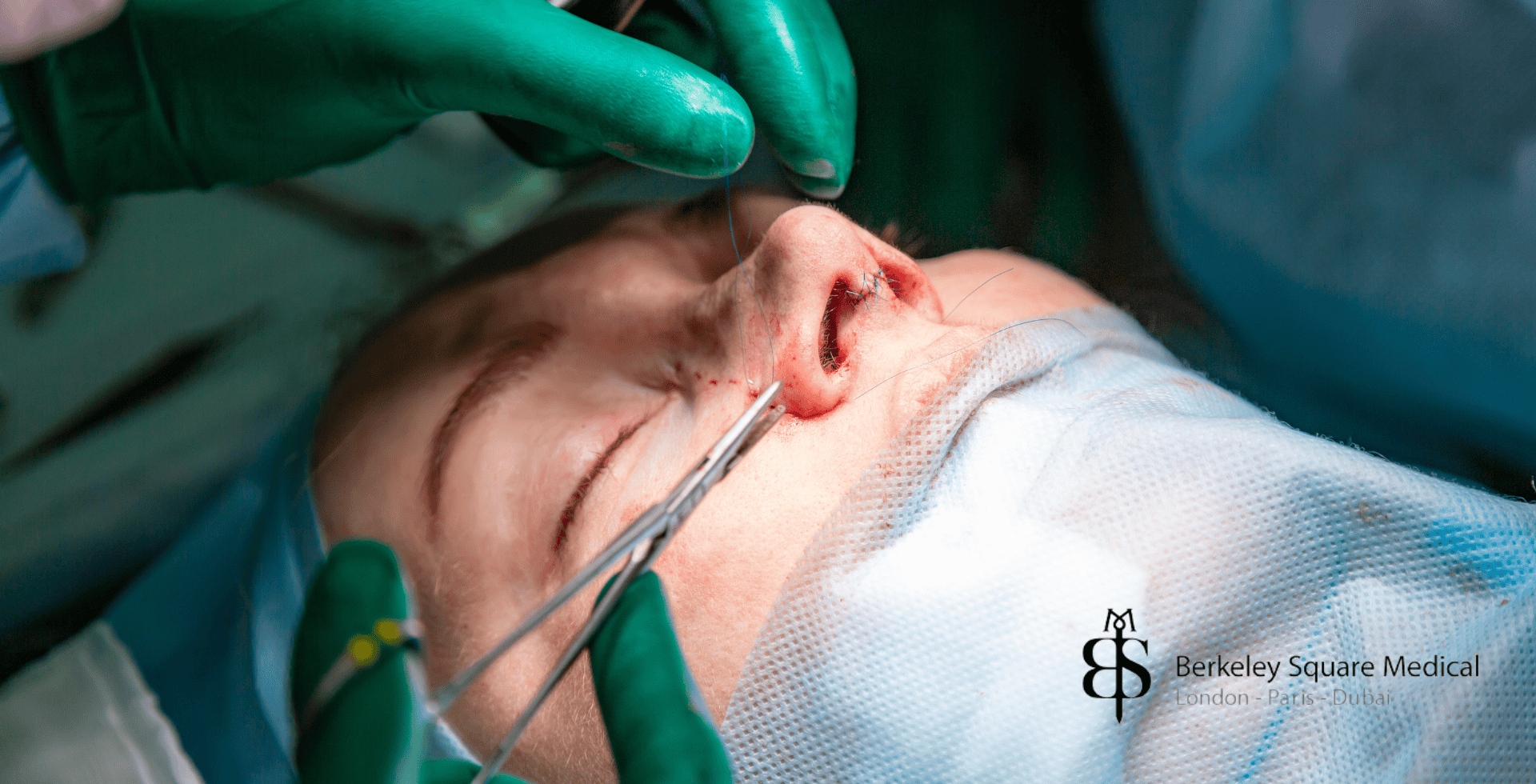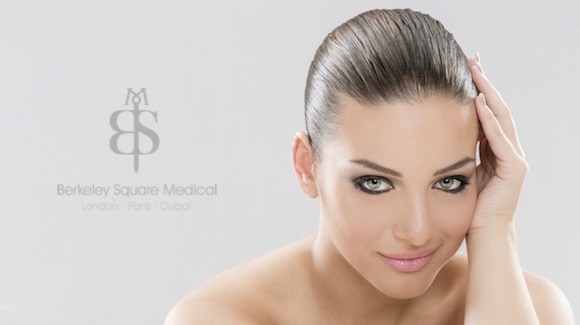If you’re considering reshaping your nose, you may have come across the term open rhinoplasty. This surgical approach is commonly used in London and around the world to achieve precise, natural-looking results—particularly when more complex adjustments are needed.
In this guide, we’ll walk you through everything you need to know about open rhinoplasty, from how it works to whether it might be the right choice for you.
What is Open Rhinoplasty?
Open rhinoplasty is a surgical technique used to reshape the nose. Unlike closed rhinoplasty—where all incisions are made inside the nostrils—open rhinoplasty involves a small incision across the columella, the narrow strip of skin that separates the nostrils. This allows the surgeon to lift the nasal skin and gain direct access to the underlying bone and cartilage.
The open approach gives your surgeon a full, unobstructed view of the internal structures of the nose. This visibility is especially useful for more complex procedures, such as correcting asymmetry, revising previous surgeries, or rebuilding the nasal tip.
While the idea of an external incision may seem scary at first, the scar is typically very small and well-hidden beneath the nose. In most cases, it fades significantly over time and becomes barely noticeable.
Open vs. Closed Rhinoplasty: What’s the Difference?
One of the most common questions patients ask is how open rhinoplasty compares to the closed technique. Both methods can achieve excellent results, but there are key differences that may make one approach more suitable than the other depending on your individual goals.
Here’s a quick breakdown:
- Incisions & Scarring
Open rhinoplasty involves a small external incision on the columella, which may leave a faint scar. In closed rhinoplasty, all incisions are made inside the nostrils, leaving no visible scarring.
- Visibility & Precision
The open technique provides better visibility for the surgeon, allowing for more detailed adjustments to the nasal framework. This is especially helpful in complex or revision cases.
- Complexity of the Case
Open rhinoplasty is often recommended for patients requiring significant reshaping or structural work. Closed rhinoplasty is more commonly used for simpler adjustments where less access is needed.
- Recovery Time
Because it is slightly more invasive, open rhinoplasty may lead to more swelling and a longer initial recovery. However, long-term outcomes are often more refined when precision is required.
Ultimately, neither approach is universally “better”—the best technique for you will depend on your unique anatomy and aesthetic goals. A qualified surgeon will guide you through this choice during your consultation.

Who Is a Good Candidate for Open Rhinoplasty?
Open rhinoplasty is ideal for patients who require a more detailed and precise reshaping of the nose. It’s often the preferred technique for:
- Major structural changes – such as reducing a pronounced nasal hump, straightening a crooked nose, or reshaping the nasal tip.
- Revision rhinoplasty – correcting or improving the results of a previous nose surgery.
- Functional issues – including breathing difficulties related to a deviated septum or collapsed nasal valves.
- Nasal trauma – injuries that have altered the appearance or structure of the nose.
- Complex cases – where symmetry or extensive grafting is required.
Candidates should generally be in good physical health, non-smokers, and over the age of 18, as nasal growth should be complete before undergoing surgery.
Benefits and Advantages of Open Rhinoplasty
There are several reasons why surgeons may recommend the open approach, particularly for patients looking for more substantial changes:
- Improved visibility – The open technique allows the surgeon to see the entire nasal framework clearly, leading to more precise alterations.
- Greater surgical control – It provides better access for refining complex structures like the nasal tip or septum.
- Better outcomes for revisions – Open rhinoplasty makes it easier to correct or adjust previous surgical results.
- Easier graft placement – Cartilage grafts can be positioned more accurately, improving both structure and appearance.
- Simultaneous correction of function and form – Surgeons can address breathing issues and cosmetic goals in a single procedure.
These benefits often lead to a more refined, balanced result—especially in challenging or intricate cases.
Risks and Drawbacks to Consider
Like any surgical procedure, open rhinoplasty comes with potential risks. While complications are rare when performed by a skilled surgeon, it’s important to be informed:
- Scarring – Although the incision on the columella is small and usually fades well, it does leave a permanent (albeit subtle) scar.
- Swelling and bruising – Open rhinoplasty can lead to more noticeable swelling, particularly at the nasal tip, and a longer recovery period compared to closed rhinoplasty.
- Infection or bleeding – As with any surgery, there is a minor risk of postoperative complications, though these are uncommon.
- Numbness or stiffness – Temporary changes in sensation or tip stiffness can occur but usually improve with time.
These drawbacks are generally temporary and manageable. Your surgeon will guide you through post-operative care to reduce risks and support healing.
The Open Rhinoplasty Procedure: What to Expect
Understanding what happens during surgery can ease anxiety and help you feel more prepared. Here’s what typically occurs during an open rhinoplasty:
- Anaesthesia – The procedure is usually performed under general anaesthesia, so you’ll be asleep and pain-free throughout.
- Incision – A small external incision is made across the columella, along with hidden incisions inside the nostrils.
- Skin lifting – The skin is carefully lifted to reveal the nasal structures.
- Reshaping – The surgeon adjusts the bone and cartilage to reshape the nose. This may involve removing a hump, narrowing the nasal bridge, refining the tip, or straightening a deviated septum.
- Grafting (if needed) – Cartilage from the septum, ear, or rib may be used to support or enhance nasal contours.
- Closure – The skin is repositioned and the incisions are closed with fine stitches.
- Splinting – A nasal splint is applied to protect and support the new shape during healing.
The surgery usually takes between 1.5 and 3 hours, depending on the complexity of the case.
Cost of Open Rhinoplasty in London
The cost of open rhinoplasty in London typically ranges from £6,000 to £10,000 or more, depending on:
- The complexity of your procedure
- The surgeon’s experience and qualifications
- Hospital or clinic fees
- Whether it is a primary or revision surgery
Prices generally include consultations, surgery, anaesthesia, and post-operative care, but it’s always important to clarify what is and isn’t included in your quote.
At Berkeley Square Medical, the cost of your full rhinoplasty surgery – including open rhinoplasty – is set at £7950.00. This is an all-inclusive price that includes the cost of consultation, the entire procedure, and a full-service aftercare.
NHS Coverage: Cosmetic rhinoplasty is not covered by the NHS. However, if the surgery is being done to correct a functional issue (such as severe breathing problems), it may be eligible—but these cases are rare and require thorough assessment.
Frequently Asked Questions (FAQs)
Is open rhinoplasty more painful than closed?
Not usually. Most patients report manageable discomfort such as pressure and congestion. Pain is typically well-controlled with medication.
Will the scar be visible?
The scar is located under the nose and is generally very small. With proper care, it fades significantly and becomes barely noticeable.
How long before I can return to work?
Most people can return to desk-based work within 10–14 days, depending on how quickly bruising and swelling resolve.
When will I see the final results?
Initial results are visible after the splint is removed (around one week), but full results develop over 6–12 months as swelling continues to subside.
Can open rhinoplasty fix breathing problems?
Yes. Open rhinoplasty is often used in combination with functional procedures like septoplasty to improve airflow and correct structural blockages.
For more information about having a Rhinoplasty consultation, the different types of rhinoplasty, procedure and recovery, visit our rhinoplasty page.
Sanjay is a Senior Clinical Member at Berkeley Square Medical carrying over a decade of experience. He has assisted over 1500 surgeries carried out at the hospital supporting patients both pre and post-surgery throughout their treatment journeys. This article was written with the contribution of
Dr Taimur Shoaib, our Consultant Plastic Surgeon.
Latest posts by Sanjay Rai
(see all)
